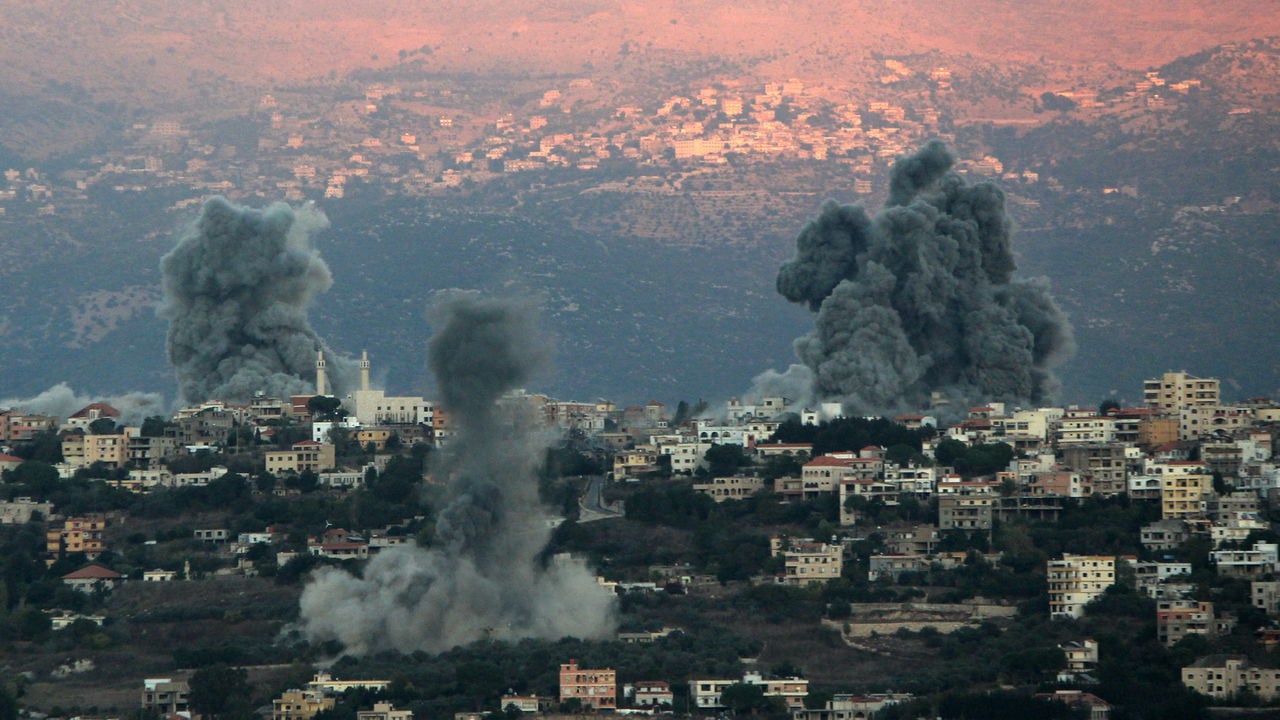Tracking Israel’s war in Lebanon, in maps
The latest data on Israel’s invasion, including on casualties, strikes and displaced people

Image: DPA
)

LEBANON
Mediterranean Sea
Litani
Awali
SYRIA
Golan
Heights
Reported attacks, Oct 8th 2024
ISRAEL
Since Sep 21st
By Israel
By Hizbullah
Towns ordered to evacuate by Israel
Source: Institute for the Study of War; OpenSteetMap

LEBANON
Mediterranean
Sea
Awali
Litani
SYRIA
Golan
Heights
ISRAEL
Reported attacks, Oct 8th 2024
Since Sep 21st
By Israel
By Hizbullah
Towns ordered to evacuate by Israel
Source: Institute for the Study of War; OpenSteetMap
Read more coverage of Israel, Hizbullah and Lebanon:
Attacks
Video: AP; Getty
Daily reported attacks
To NaNth
-
By Hizbullah
-
By Israel
Casualties and displacement
Internally displaced people
To NaNth 2024, Lebanon
Cumulative deaths reported
To NaNth 2024, Lebanon
Iran’s involvement
